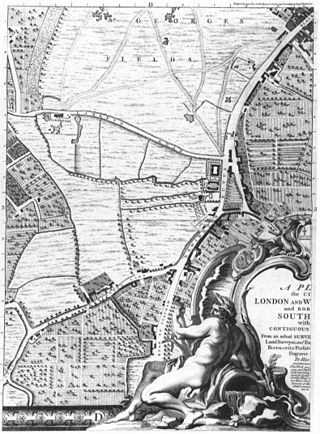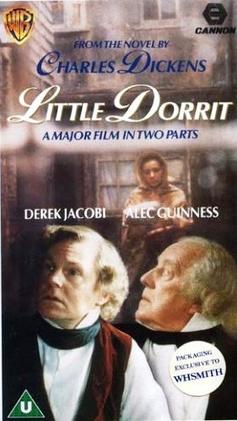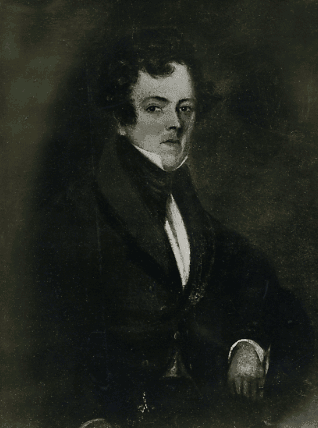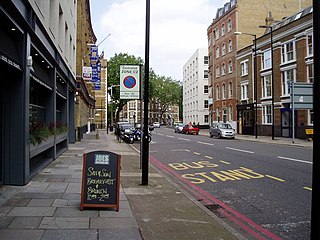
Little Dorrit's Playground, named after Little Dorrit, the eponymous Charles Dickens character, is a public playground and small park just north of Marshalsea Road in Southwark, south London, England.

Little Dorrit's Playground, named after Little Dorrit, the eponymous Charles Dickens character, is a public playground and small park just north of Marshalsea Road in Southwark, south London, England.
The site was previously called Falcon Court, "a horrible rookery of tumble-down, dirty hovels." [1] In 1902, a small public open space called Little Dorrit's Playground was opened north of Marshalsea Road. [2] [3] The surrounding area has many Dickensian associations. Charles Dickens himself had lodgings in Lant Street to the south of Marsalsea Road as a child when his father is in the Marshalsea debtors' prison nearby in 1824. This had a profound effect on the young Dickens and his later novel Little Dorrit is based around the area and the prison. The character Little Dorrit was baptised and married in the local church, St George the Martyr, at the southeast end of Marshalsea Road close to the playground.
Much of the area became derelict as a result of air raid damage during World War II. In 2001, the playground was improved through the effort of the Little Dorrit Park Group, set up by mothers in the area. [1] The playground is supported by the Bankside Open Spaces Trust (BOST).
North of Marshalsea Road, Little Dorrit's Court, also named after the Dickens character, can be found as well.

Little Dorrit is a novel by Charles Dickens, originally published in serial form between 1855 and 1857. The story features Amy Dorrit, youngest child of her family, born and raised in the Marshalsea prison for debtors in London. Arthur Clennam encounters her after returning home from a 20-year absence, ready to begin his life anew.


Borough High Street is a road in Southwark, London, running south-west from London Bridge, forming part of the A3 route which runs from London to Portsmouth, on the south coast of England.

Burgess Park is a public park situated in Camberwell the London Borough of Southwark, and is close to Walworth to the north, Bermondsey to the east and Peckham to the south. At 56 hectares, it is one of the largest parks in South London.


Little Dorrit is a 1987 film adaptation of the 1857 novel Little Dorrit by Charles Dickens. It was written and directed by Christine Edzard, and produced by John Brabourne and Richard B. Goodwin. The music by Giuseppe Verdi was arranged by Michael Sanvoisin.

St George the Martyr is a church in the historic Borough district of south London. It lies within the modern-day London Borough of Southwark, on Borough High Street at the junction with Long Lane, Marshalsea Road, and Tabard Street. St George the Martyr is named after Saint George. The church is a Grade II* listed building.

John Dickens was the father of famous English novelist Charles Dickens and was the model for Mr Micawber in his son's semi-autobiographical novel David Copperfield.

Union Street is a major street in the London Borough of Southwark. It runs between Blackfriars Road to the west and Borough High Street to the east. Southwark Bridge Road crosses in the middle.
Horsemonger Lane Gaol was a prison close to present-day Newington Causeway in Southwark, south London. Built at the end of the 18th century, it was in use until 1878.

Victoria Park is in Church End in Finchley in the London Borough of Barnet. It covers seven hectares. It is on the east side of Ballards Lane and fairly close to Finchley Central and West Finchley tube stations.

The King's Bench Prison was a prison in Southwark, south London, England, from medieval times until it closed in 1880. It took its name from the King's Bench court of law in which cases of defamation, bankruptcy and other misdemeanours were heard; as such, the prison was often used as a debtor's prison until the practice was abolished in the 1860s. In 1842, it was renamed the Queen's Bench Prison, and became the Southwark Convict Prison in 1872.

Southwark Park is located in Rotherhithe, in central South East London, England, and is managed by the London Borough of Southwark. It first opened in 1869 by the Metropolitan Board of Works as one of its first parks. It was designed by Alexander McKenzie and covers 63 acres (250,000 m2). It takes its name from being in what was the old Parliamentary constituency of Southwark at the time of its opening.

Little Dorrit is a 2008 British miniseries based on Charles Dickens's serial novel of the same title, originally published between 1855 and 1857. The screenplay is by Andrew Davies and the episodes were directed by Adam Smith, Dearbhla Walsh, and Diarmuid Lawrence.

Marshalsea Road is a major street in Southwark, south London, England. At the northwest end is the Southwark Bridge Road. At the southeast end is Borough tube station on Borough High Street. Continuing across the street are Long Lane and Great Dover Street. At the northeast corner is the historic St George the Martyr church, where the Charles Dickens character Little Dorrit was married in Dickens' book of the same name. The area around Marshalsea Road has many Dickens associations.

The Marshalsea (1373–1842) was a notorious prison in Southwark, just south of the River Thames. Although it housed a variety of prisoners—including men accused of crimes at sea and political figures charged with sedition—it became known, in particular, for its incarceration of the poorest of London's debtors. Over half of England's prisoners in the 18th century were in jail because of debt.

Lant Street is a street south of Marshalsea Road in Southwark, south London, England.

Long Lane is a main east–west road in Southwark, south London, England.

Charles Dickens's works are especially associated with London, which is the setting for many of his novels. These works do not just use London as a backdrop but are about the city and its character.
This is a list of the etymology of street names in the London district of Southwark. The area has no formally defined boundaries – those utilised here are: the river Thames to the north, Tower Bridge Road to the east, Bricklayers Arms/New Kent Road/Elephant and Castle to the south, and London Road/St George's Circus/Blackfriars Road to the west.